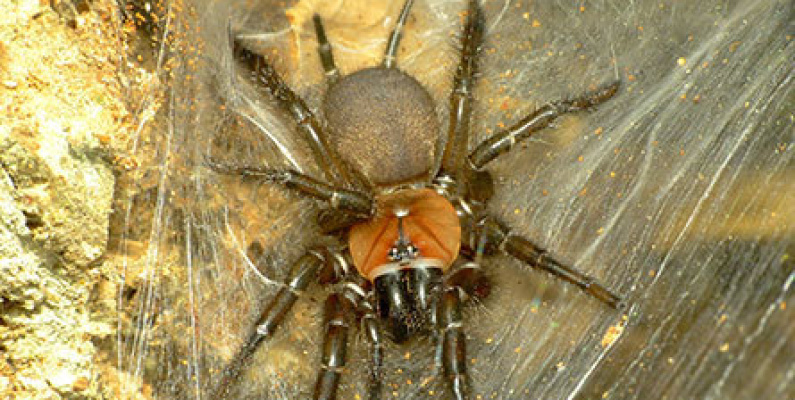
Spring is well and truly in the air, the plants are flowering and the first invertebrate identifications of the summer have started to roll in. The most common spider that we are asked to identify through photographs, phone calls or specimens brought to the Museum is the large tunnelweb spider, Porrhothele antipodiana. This native, endemic spider is commonly found around Dunedin and probably lives in your garden.
The tunnelweb spider’s body can be 30 mm in length and it can have a total leg span around 50 mm. Their distinctive cephalothorax (the fused head and thorax) is leathery and reddy-brown in colour, while their abdomen and legs are dark. They have large spinnerets which look like small legs that extend out of the abdomen.
These spiders live in tubular tunnels under logs and in small holes. Their web is not sticky and extends out from the tunnel. During the day, the spider hides inside, once it is dark it waits in the entrance of its tunnel. When prey crawls over the web, the vibrations alert the spider to its presence. Tunnelwebs are agile spiders and can quickly ambush prey from their tunnel hidey-hole. They will eat most small invertebrates that come in contact with their web including stinging insects like bees and wasps. They are also known to eat snails – which make them handy to have in the garden.
During spring and summer the male tunnelweb spiders begin to roam about looking for females and this is when most people see them. We also get an increase in sightings at this time of year as people are in their gardens getting them ready for summer and you are more likely to see spiders and insects when you are down on their level.
The bites are painful and may cause localised swelling, itching, or numbness, very similar in feeling to a bee sting. Which is why wearing gloves in the garden is a good idea. If bitten you are advised to disinfect the area to reduce any risk of infection. The venom is not dangerous to humans.
Top image: A large female tunnelweb spider waits on her sheet-like web in Woodhaugh Gardens. By Steve Kerr. CC-BY 4.0.
